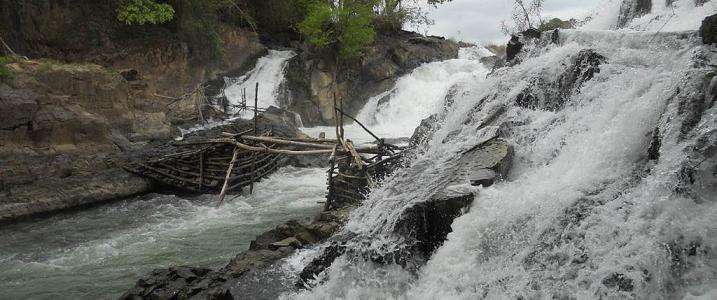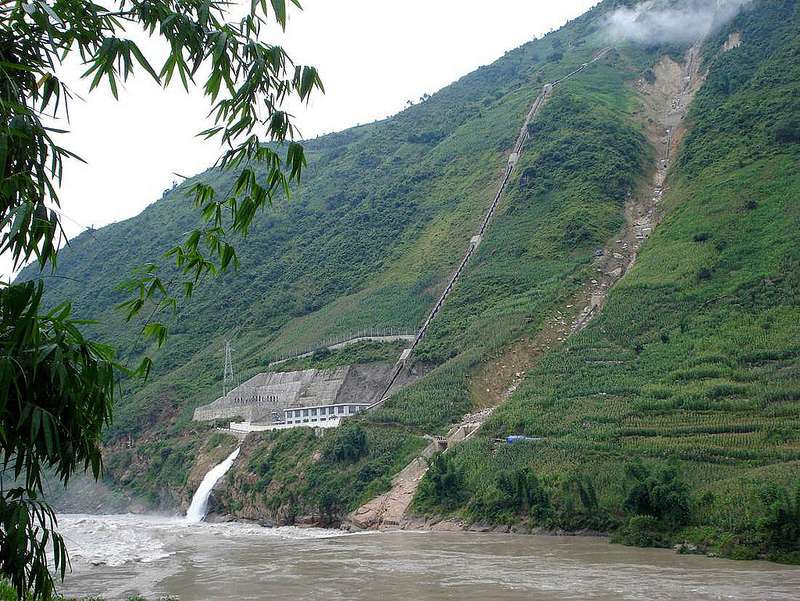Comprehensive report of world's transboundary water basins finds hotspots of risk

Environmental stresses including climate change and population growth will have an enormous impact on the world's waterways that cross international borders, a new report concludes, but economic development may have consequences just as far-reaching.
The United Nations Environmental Group has just completed the most comprehensive assessment of the world's 286 transboundary river basins yet attempted and identified "hotspots" where geopolitical risks are projected to increase in the next 15 to 30 years.
"The proliferation of dams and diversion of water from countries that are upstream from other nations that are dependent on that water is of growing concern," said Aaron Wolf, an internationally recognized water treaty expert from Oregon State University, who was involved in creating the report. "There simply isn't enough water to go around."
These transboundary river basins and other waterways span 151 countries and include more than 40 percent of the world's population and land area. The analysis, "Transboundary Waters Assessment Programme," was a collaborative effort between eight international organizations and research institutes and Oregon State University.
Among the areas considered hotspots, the report concludes, are the Middle East, Central Asia, and the Ganges-Brahmaputra-Meghna basin.

The Tigris-Euphrates river basins are the focus of much of the stress in the Middle East, Wolf pointed out. Turkey is building dams upstream, which could reduce water previously used by Iraq and Syria. Political destabilization and the control of some dams by ISIS further complicates the issue.
"It is a blueprint for trouble," Wolf said, "when a country upstream wants to build a dam and has no agreement with the country or countries downstream."
Central Asia became a hotspot after the breakup of the Soviet Union, which once controlled the water in the region. In recent years, Tajikistan and Kyrgyzstan have developed plans to construct dams that would reduce water now being used for irrigation downstream in Kazakhstan and Uzbekistan. Increasing use of water from Central Asian river has resulted in the lowering of the Aral Sea, and increased dangers from toxic waste deposits.
The Ganges-Brahmaputra-Meghna basin has a similar issue, which is repeating itself through the Chinese Himalayas, said Wolf, who is a professor in OSU's College of Earth, Ocean, and Atmospheric Sciences.
"China has massive energy requirements and has been very active in building dams as they try to wean themselves off coal," Wolf said. "Water is being impacted on many of the rivers in the Himalayas in one form or another and 1.5 billion people downstream rely on it. In some of the delta, as the rivers drop, salt water intrudes and further destabilizes the environment."
The Nile basin faces similar issues, Wolf noted.
Not all of the troubled areas are because of political issues, the OSU researcher pointed out. The southwestern United States and northern Mexico rely almost solely on the Colorado River and the Rio Grande for water.
"We have great agreements with Mexico," Wolf said. "But there's just not a lot of water there. And climate change may make it worse."
Many of these hotspots have been known about for some time, but the baseline data in the assessment combined with the first comprehensive look at the impact of multiple stressors may allow policy-makers to get ahead of the curve before disaster strikes, Wolf said.
"From a geopolitical standpoint, if you can identify places where things have the potential to blow up before people realize it, you can jump-start the conversation and begin what we call "preventive diplomacy,'" Wolf noted. "Imagine if we could have had such a conversation about the Klamath River basin in Oregon before the drought of 2001."
One area of potential trouble, Wolf said, is in the Salween basin, where water from China may be dammed before it can get to Myanmar and Thailand. "All three countries have development plans for the region," he said, "and none of them are compatible."
The Helmand and Harirud basins, shared by Afghanistan and Iran, also have the potential for flare-up, Wolf said.
"The U.S. wants Afghanistan to develop its economy and become more independent, but Iran downstream also wants that water and has tenuous relations with us. We hope that the information in this report will provide early warning so appropriate actions can be taken to prevent escalating tensions."
More information: The report is available online at twap-rivers.org/
Provided by Oregon State University

















